Probiotics have gained significant attention in the health and wellness sphere, recognized for their role in promoting a healthy gut and improving overall well-being. This blog post explores a variety of probiotic foods, each offering unique benefits and flavors. From traditional beverages like kefir to fermented vegetables such as sauerkraut, these foods are not only nutritious but also versatile in culinary uses. Understanding the importance of these probiotics and how to include them in daily meals can be a game changer for health-conscious individuals.
Kefir
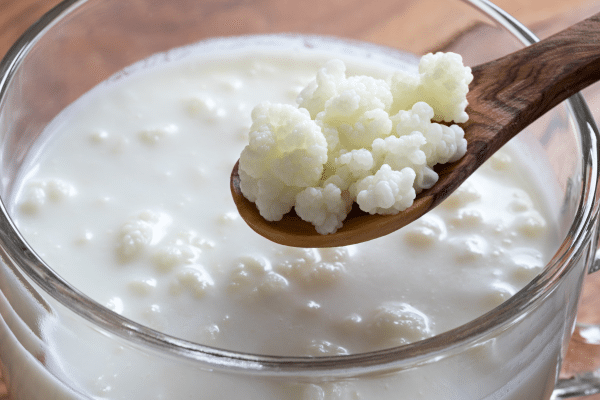
Originating from the northern Caucasus Mountains, Kefir is a fermented milk drink known for its tart and refreshing taste. This effervescent beverage is made by adding kefir grains to cow, goat, or sheep milk. These grains are a symbiotic culture of bacteria and yeasts that ferment the milk, imparting it with probiotics. Unlike regular milk, kefir is easily digestible and suitable for those with lactose intolerance, thanks to the fermentation process that breaks down lactose.
Kefir stands out for its impressive array of health benefits. It is a rich source of calcium, protein, and B vitamins, contributing to stronger bones, improved digestion, and enhanced immune function. For those looking to incorporate kefir into their diet, it can be enjoyed as a standalone drink, blended into smoothies, or used as a base for salad dressings and marinades. Kefir’s versatility makes it an easy addition to daily meals, offering a probiotic boost with every serving.
Tempeh
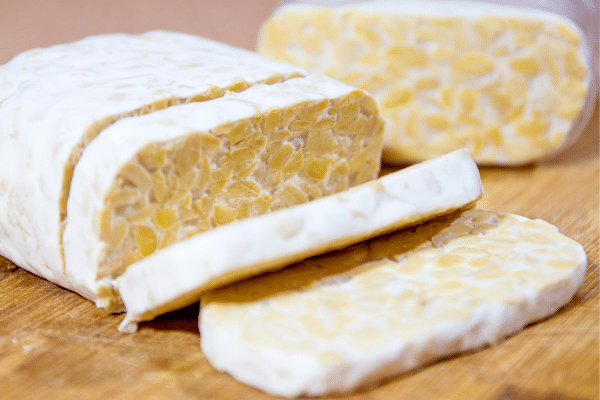
Tempeh, a traditional Indonesian soy product, is a nutrient-packed probiotic food. Made by fermenting soybeans with a specific type of mold, tempeh forms into a firm, dense cake that’s rich in protein and fiber. Unlike other soy products, its fermentation process not only enhances its nutritional profile but also produces natural antibiotics, which are believed to increase the body’s resistance to infections.
The benefits of tempeh extend beyond its probiotic content. Being a plant-based protein source, it’s an excellent option for vegetarians and vegans. It’s also high in calcium, magnesium, iron, and phytonutrients, contributing to bone health, digestive wellness, and overall vitality. For culinary use, tempeh can be grilled, sautéed, or incorporated into stews and salads. Its nutty flavor and substantial texture make it a versatile ingredient that can be used in various recipes.
Sauerkraut
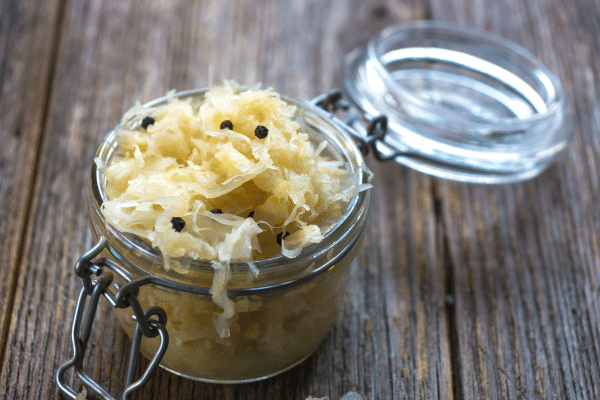
Sauerkraut, a famous fermented cabbage dish, has its roots in German cuisine. This tangy and crunchy food is created by fermenting finely cut cabbage in a brine solution, allowing beneficial bacteria to flourish. The fermentation process not only preserves the cabbage but also enhances its nutritional value, introducing a host of probiotics that are beneficial for gut health. Sauerkraut is also low in calories and high in fiber, making it an excellent addition to a weight management diet.
The health benefits of sauerkraut extend to its high vitamin C and K content, as well as antioxidants that help reduce inflammation and improve digestive health. It can be served as a side dish, added to sandwiches, or used as a topping for salads and other dishes. Its unique flavor and texture make sauerkraut a delightful addition to meals, providing a probiotic punch that can boost overall health.
Kimchi
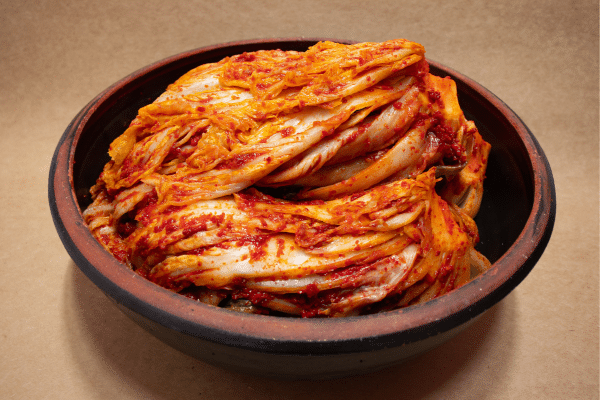
Kimchi, a staple in Korean cuisine, is a spicy and sour fermented vegetable dish, typically made with cabbage and a variety of seasonings. This vibrant dish undergoes a fermentation process that not only imparts a unique flavor but also generates beneficial probiotics. Rich in vitamins A, B, and C, kimchi is a nutritional powerhouse that supports immune function and aids in digestion. Moreover, it’s a low-calorie food, making it a suitable choice for those looking to maintain a healthy diet.
Besides its health benefits, kimchi is revered for its versatility in culinary applications. It can be eaten on its own, added to soups, or used as a condiment in a variety of dishes. The distinct taste of kimchi enhances the flavor profile of any meal, making it a popular choice for those looking to add a probiotic and flavorful kick to their dishes.
Miso
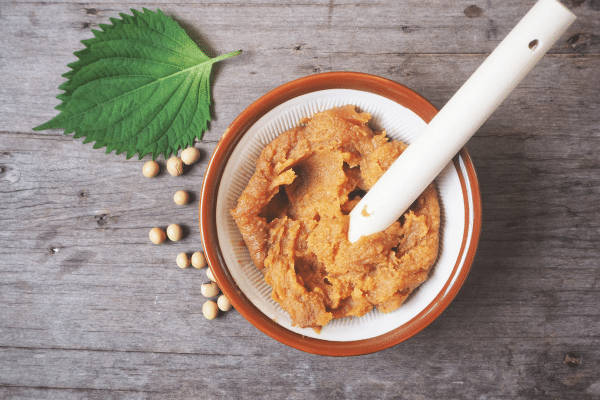
Miso, a traditional Japanese seasoning, is produced by fermenting soybeans with salt and a fungus known as koji. This fermentation process results in a rich, savory paste that’s teeming with probiotics. Miso is available in several varieties, including white, red, and mixed, each offering a unique flavor profile. It’s not only a probiotic-rich food but also a source of protein, vitamins, and minerals, making it a nutritious addition to any diet.
Miso’s uses in cooking are diverse and extend beyond the famous miso soup. It can be used as a marinade, a glaze for vegetables and meats, or as an ingredient in salad dressings and sauces. The umami-rich flavor of miso enhances the taste of various dishes, offering a simple way to incorporate probiotics into everyday cooking.
Kombucha
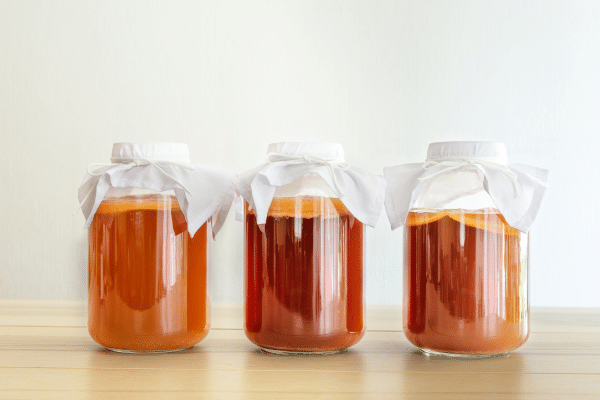
Kombucha, a fermented tea beverage, has gained popularity worldwide for its unique taste and health benefits. This effervescent drink is produced by fermenting sweetened tea with a symbiotic culture of bacteria and yeast (SCOBY). The fermentation process imbues kombucha with a range of probiotics, known for supporting gut health. Additionally, kombucha contains antioxidants and can have detoxifying properties, making it a healthful choice for those looking to improve their overall well-being.
For those new to kombucha, it is recommended to start with small servings due to its potent effects. Kombucha comes in various flavors, ranging from fruity to herbal, catering to different taste preferences. As a probiotic drink, it’s an excellent alternative to sugary sodas, offering a healthful and refreshing beverage option.
Yogurt
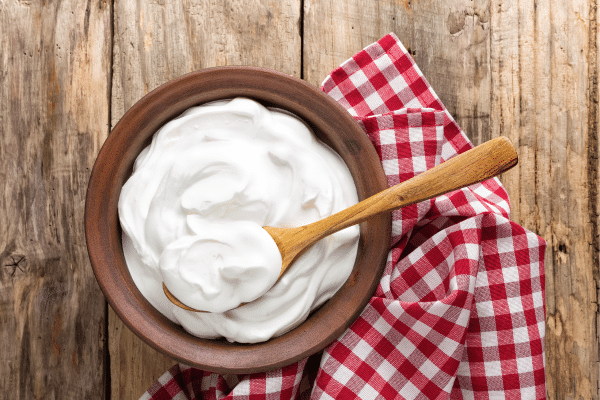
Yogurt, a well-known probiotic food, is made by fermenting milk with specific bacterial cultures. This process not only gives yogurt its distinctive tangy taste and creamy texture but also enriches it with probiotics. Yogurt is an excellent source of calcium, protein, and vitamins, contributing to bone health, muscle maintenance, and overall nutritional well-being. It’s also versatile, easily incorporated into breakfasts, snacks, and even savory dishes.
When selecting yogurt, it’s advisable to choose plain, unsweetened varieties to maximize health benefits and avoid added sugars. Yogurt can be enjoyed on its own, mixed with fruits and nuts, or used in cooking and baking. Its mild flavor and creamy consistency make it a popular choice for creating smoothies, dressings, and sauces, offering a delicious way to include probiotics in the diet.
The Bottom Line
Incorporating probiotic foods into the diet is a simple yet effective way to improve gut health and overall wellness. From the tangy crunch of sauerkraut to the refreshing sip of kombucha, these foods offer not only health benefits but also a variety of flavors and textures to enjoy. Experimenting with different probiotic foods can add a new dimension to meals while supporting digestive health, immune function, and nutrient absorption. Embracing these foods in daily eating habits can lead to a more balanced, healthful lifestyle, catering to both taste and well-being.


